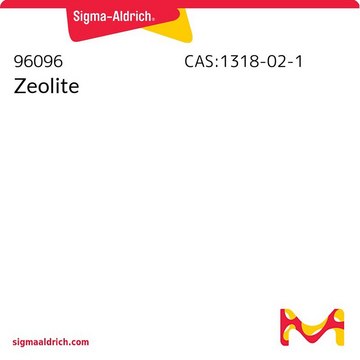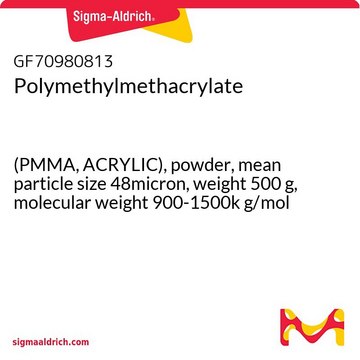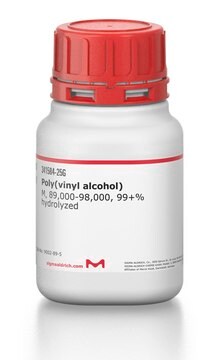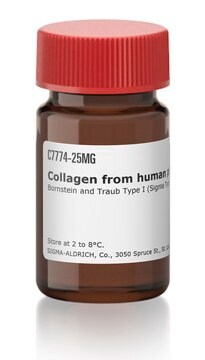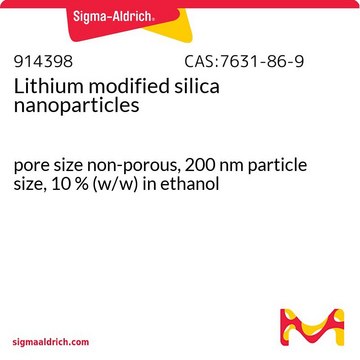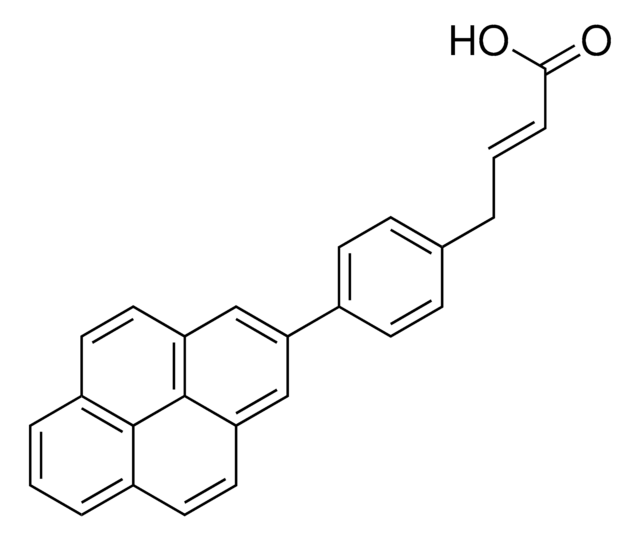おすすめの製品
由来生物
rabbit
品質水準
抗体製品の状態
purified immunoglobulin
抗体製品タイプ
primary antibodies
クローン
polyclonal
交差性
fish, frog, mouse, human
メーカー/製品名
Chemicon®
テクニック
immunocytochemistry: suitable
immunohistochemistry (formalin-fixed, paraffin-embedded sections): suitable
immunoprecipitation (IP): suitable
western blot: suitable
NCBIアクセッション番号
UniProtアクセッション番号
輸送温度
wet ice
ターゲットの翻訳後修飾
unmodified
遺伝子情報
human ... ABLIM3(22885)
特異性
LIM-3を認識します。組織切片上ではgsh-4と交差反応しないようですが、ウェスタンブロットや免疫沈降では交差反応する可能性があります。
免疫原
マウスLIM-3タンパク質のC末端部分
アプリケーション
免疫組織染色:希釈倍率1:250~1:1,000でパラフィン包埋切片に使用できます。希釈倍率1:3,000~1:6,000で凍結切片に使用できます。希釈倍率1:4,000~1:8,000でホールマウントに使用できます。推奨固定剤はMEMFAです。
免疫細胞染色:希釈倍率1:200~1:500で使用できます。
ウェスタンブロッティング:希釈倍率1:2,500~1:5,000で使用できます。
免疫沈降:希釈倍率1:200で使用できます。
免疫蛍光染色では十分に機能しません。ビオチン結合二次抗体を使用し、さらにその後ストレプトアビジン結合の蛍光色素を使用してください。
最適なワーキング希釈倍率は、ご自身で決定してください。
免疫細胞染色:希釈倍率1:200~1:500で使用できます。
ウェスタンブロッティング:希釈倍率1:2,500~1:5,000で使用できます。
免疫沈降:希釈倍率1:200で使用できます。
免疫蛍光染色では十分に機能しません。ビオチン結合二次抗体を使用し、さらにその後ストレプトアビジン結合の蛍光色素を使用してください。
最適なワーキング希釈倍率は、ご自身で決定してください。
抗LIM-3抗体は、LIM-3に対する抗体で、IP、WB、IC、IH、IH(P)で使用できます。
研究カテゴリー
神経科学
神経科学
研究サブカテゴリー
発生ニューロサイエンス
神経細胞およびグリアマーカー
発生ニューロサイエンス
神経細胞およびグリアマーカー
物理的形状
フォーマット:精製
精製免疫グロブリン。 0.02 Mリン酸バッファー+0.25 M NaCl溶液、0.1%アジ化ナトリウム含有
保管および安定性
未希釈アリコートで、2~8°Cで最長6か月保存できます。
法的情報
CHEMICON is a registered trademark of Merck KGaA, Darmstadt, Germany
免責事項
メルクのカタログまたは製品に添付されたメルクのその他の文書に記載されていない場合、メルクの製品は研究用途のみを目的としているため、他のいかなる目的にも使用することはできません。このような目的としては、未承認の商業用途、in vitroの診断用途、ex vivoあるいはin vivoの治療用途、またはヒトあるいは動物へのあらゆる種類の消費あるいは適用などがありますが、これらに限定されません。
適切な製品が見つかりませんか。
製品選択ツール.をお試しください
保管分類コード
10 - Combustible liquids
WGK
WGK 2
引火点(°F)
Not applicable
引火点(℃)
Not applicable
適用法令
試験研究用途を考慮した関連法令を主に挙げております。化学物質以外については、一部の情報のみ提供しています。 製品を安全かつ合法的に使用することは、使用者の義務です。最新情報により修正される場合があります。WEBの反映には時間を要することがあるため、適宜SDSをご参照ください。
Jan Code
AB3202:
試験成績書(COA)
製品のロット番号・バッチ番号を入力して、試験成績書(COA) を検索できます。ロット番号・バッチ番号は、製品ラベルに「Lot」または「Batch」に続いて記載されています。
The LIM-homeodomain proteins Isl-1 and Lhx3 act with steroidogenic factor 1 to enhance gonadotrope-specific activity of the gonadotropin-releasing hormone receptor gene promoter.
Granger, A; Bleux, C; Kottler, ML; Rhodes, SJ; Counis, R; Laverriere, JN
Molecular Endocrinology null
Mai Nakamura et al.
Cytotechnology, 68(3), 409-417 (2014-10-31)
Mouse embryonic stem (ES) cells and induced pluripotent stem (iPS) cells have the ability to differentiate in vitro into various cell lineages including neurons. The differentiation of these cells into neurons has potential applications in regenerative medicine. Previously, we reported
Clifford R Hume et al.
Gene expression patterns : GEP, 7(7), 798-807 (2007-07-03)
A cascade of transcription factors is believed to regulate the coordinate differentiation of primordial inner ear cells into the subtypes of hair cells and supporting cells. While candidate genes involved in this process have been identified, the temporal and spatial
Stephanie W Fowler et al.
The Journal of neuroscience : the official journal of the Society for Neuroscience, 34(23), 7871-7885 (2014-06-06)
An unresolved debate in Alzheimer's disease (AD) is whether amyloid plaques are pathogenic, causing overt physical disruption of neural circuits, or protective, sequestering soluble forms of amyloid-β (Aβ) that initiate synaptic damage and cognitive decline. Few animal models of AD
Zhiyong Liu et al.
The Journal of neuroscience : the official journal of the Society for Neuroscience, 32(19), 6600-6610 (2012-05-11)
Unlike nonmammalian vertebrates, mammals cannot convert inner ear cochlear supporting cells (SCs) into sensory hair cells (HCs) after damage, thus causing permanent deafness. Here, we achieved in vivo conversion of two SC subtypes, pillar cells (PCs) and Deiters' cells (DCs)
ライフサイエンス、有機合成、材料科学、クロマトグラフィー、分析など、あらゆる分野の研究に経験のあるメンバーがおります。.
製品に関するお問い合わせはこちら(テクニカルサービス)

